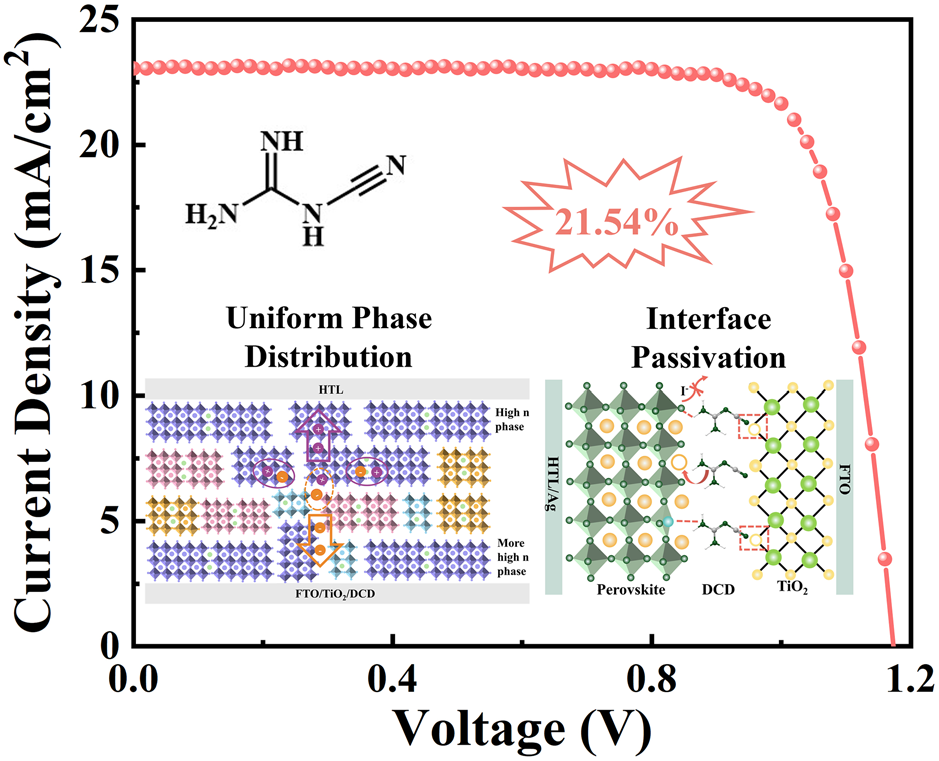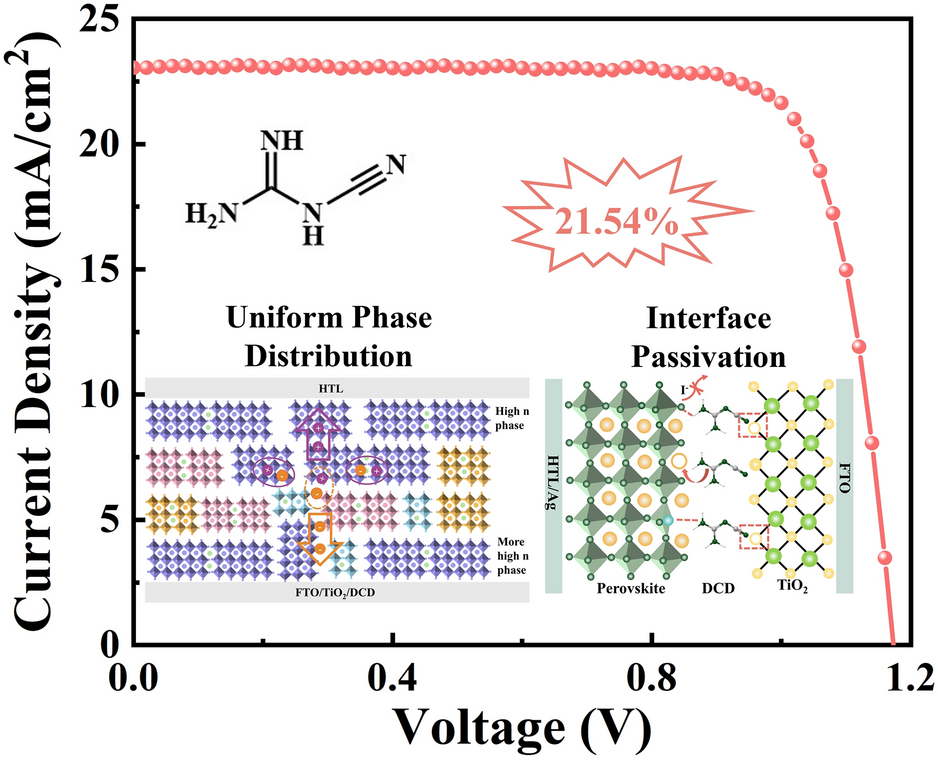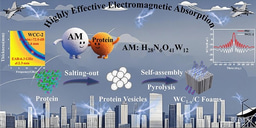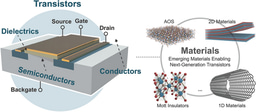Dicyandiamide-Driven Tailoring of the n-Value Distribution and Interface Dynamics for High-Performance ACI 2D Perovskite Solar Cells
Published in Materials

A research team led by Professors Pengwei Li, Yanlin Song, and Yiqiang Zhang has advanced quasi-2D alternating-cation-interlayer (ACI) perovskite solar cells by introducing a dicyandiamide (DCD)-based molecular bridge strategy. Their work, published in Nano-Micro Letters, demonstrates a dual-functional interface engineering approach that simultaneously passivates defects and regulates phase distribution, enabling record efficiencies and enhanced stability for 2D perovskite photovoltaics.
Why This Strategy Matters
- Efficiency Boost: DCD-modified devices achieve a power conversion efficiency (PCE) of 54%, compared to 19.05%in control samples.
- Reduced Defects: DCD lowers interfacial trap density by 73%, accelerating charge transport and suppressing recombination.
- Stability: Devices retain 94% of initial efficiency after 1200 h, significantly outperforming unmodified PSCs (84% retention).
Design Strategy
The innovation lies in leveraging the multifunctional guanidine and cyano groups of DCD:
- Interface Passivation: The guanidine group binds undercoordinated Pb2+ and fills cation/iodide vacancies at the perovskite buried interface.
- ETL Engineering: The cyano group coordinates with Ti4+ in TiO2, eliminating oxygen vacancies and improving perovskite/ETL contact.
- Phase Regulation: DCD suppresses low-n phase aggregation while promoting high-n phase vertical alignment, leading to uniform charge transport channels.
Mechanistic Insights
Spectroscopic and theoretical analyses confirm that:
- XPS and FTIR validate DCD–Ti and DCD–Pb interactions, while reduced oxygen vacancy ratios (from 48% to 33%) highlight defect mitigation.
- Transient absorption (TA) and PL studies reveal more homogeneous phase distribution, minimizing energy transfer losses.
- DFT calculations confirm strong –CN–Ti bonding, explaining suppressed trap formation.
Performance Highlights
- Device Metrics: VOC of 172 V, JSC of 23.08 mA cm-2, FF of 79.6%.
- Carrier Dynamics: Trap densities decreased by more than threefold; recombination resistance increased to 68 kΩ, confirming efficient charge extraction.
- Operational Stability: DCD-modified devices sustain performance under continuous 400 h illumination and withstand 1200 h of thermal and environmental stress.
Future Outlook
This study establishes a molecular bridge strategy that integrates defect passivation and phase homogenization, effectively decoupling the long-standing efficiency–stability trade-off in quasi-2D perovskites. Beyond solar cells, this versatile approach provides a universal platform for interface engineering in perovskite-based optoelectronics, including light-emitting diodes and photodetectors.
By uniting materials chemistry, interfacial physics, and device optimization, Professors Li, Song, and Zhang deliver a clear blueprint for the scalable development of efficient and durable next-generation perovskite photovoltaics.
Follow the Topic
-
Nano-Micro Letters

Nano-Micro Letters is a peer-reviewed, international, interdisciplinary and open-access journal that focus on science, experiments, engineering, technologies and applications of nano- or microscale structure and system in physics, chemistry, biology, material science, and pharmacy.






Please sign in or register for FREE
If you are a registered user on Research Communities by Springer Nature, please sign in